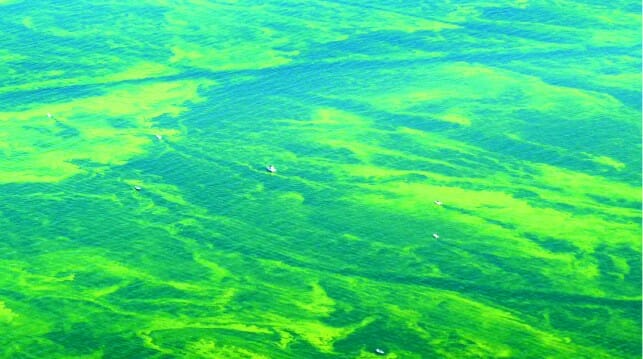Photo: Algal bloom on Lake Erie
A roving pack of journalists shake off the rain in a squat, one-story federal building in Oak Harbor, Ohio. Hosting us journalists is a troop from the US Department of Agriculture. Beyond working with farmers, most are farmers themselves. But unlike many of their agricultural colleagues, these men embrace the kind of wholesale change needed to save Lake Erie.
Existing conservation efforts consist of dyed-in-the-wool methods like planting overwinter cover crops. Yet spurred on by a $41 million (US) government program to inject science into watershed decision making, newer approaches are becoming more sophisticated.
These days farmers can ride $100,000 (US), GPS-guided machines capable of injecting fertilizer into the soil at the exact location needed, while two-dozen edge-of-field instruments monitor runoff. Both approaches to saving the lake, old and new, are making headway.
A recent government report shows that small-scale, voluntary conservation measures are active on 99 percent of cropland in Lake Erie’s western basin. Steve Davis, a water specialist with the Natural Resource Conservation Service, passes around a jar half-full of beige pellets like BBs. This jar of dry phosphorous weighs about 1.05 pounds (476 grams), he says, roughly total to the amount […]
Full article: Attack of the Killer Algae
More about toxic algae and algal blooms:
NOAA: 40% of Lake Okeechobee covered in harmful algae
Warming drives spread of toxic algae in US, researchers say
Two Factors Increasing the Risk of Harmful Algal Blooms (HABS)
Meat industry blamed for largest-ever ‘dead zone’ in Gulf of Mexico


